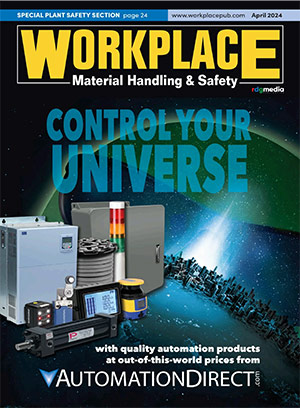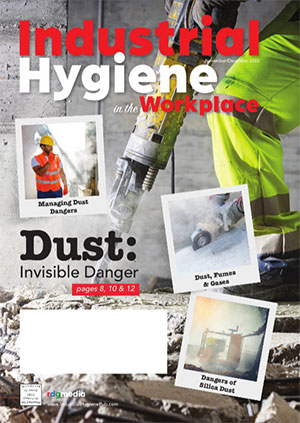Medical Services/First Aid: Focus on AEDs
History:
First aid is emergency care provided for injury or sudden illness before emergency medical treatment is available. The first aid provider in the workplace is someone who is trained in the delivery of initial medical emergency procedures, using a limited amount of equipment to perform a primary assessment and intervention while awaiting arrival of emergency medical service (EMS) personnel. A workplace first aid program is part of a comprehensive safety and health management system that includes: Management Leadership and Employee Involvement; Worksite Analysis; Hazard Prevention and Control; and Safety and Health Training.
The basic elements for a first aid program at the work place include:
- Identifying and assessing the workplace risks that have potential to cause worker injury or illness.
- Designing and implementing a workplace first aid program.
- Instructing all workers about the first-aid program, including what workers should do if a coworker is injured or ill. Putting the policies and program in writing is recommended.
- Providing for scheduled evaluation and changing of the first aid program to keep the program current and applicable to emerging risks in the workplace, including regular assessment of the adequacy of the first aid training course.
The Occupational Safety and Health Act of 1970 (OSH Act) requires employers to comply with hazard-specific safety and health standards and regulations, as issued and enforced by either OSHA or an OSHA-approved State Plan. In addition, employers must provide their employees with a workplace free from recognized hazards likely to cause death or serious physical harm under Section 5(a)(1), the General Duty Clause of the Act. Employers can be cited for violating the General Duty Clause if there is a recognized hazard and they do not take steps to prevent or abate the hazard. However, failure to implement this guide is not, in itself, a violation of the General Duty Clause. Citations can only be based on standards, regulations and the General Duty Clause.
The OSHA requirement at 29 CFR 1910.151(b) states, “In the absence of an infirmary, clinic or hospital in near proximity to the workplace which is used for the treatment of all injured employees, a person or persons shall be adequately trained to render first aid. Adequate first aid supplies approved by the consulting physician shall be readily available.”
Why Standard is Important:
There were 5,703 work-related fatalities in private industry in 2004. In that same year there were 4.3 million total workplace injuries and illnesses, of which 1.3 million resulted in days away from work. Occupational illnesses, injuries and fatalities in 2004 cost the U.S. economy $142.2 billion, according to National Safety Council estimates. The average cost per occupational fatality in 2004 exceeded $1 million.
To cover the costs to employers from workplace injuries, it has been calculated that each and every employee in this country would have had to generate $1,010 in revenue.
Sudden cardiac arrest (SCA) may also occur at work. According to recent statistics from the American Heart Association, there are 250,000 out-of-hospital SCAs annually. The actual number of SCAs that happen at work are unknown. If an employee collapses without warning and is not attended to promptly and effectively, the employee may die. Sudden cardiac arrest is caused by abnormal, uncoordinated beating of the heart or loss of the heartbeat altogether, usually as a result of a heart attack.
First Aid Supplies
It is advisable for the employer to give a specific person the responsibility for choosing the types and amounts of first aid supplies and for maintaining these supplies. The supplies must be adequate; should reflect the kinds of injuries that occur; and must be stored in an area where they are readily available for emergency access.
An automated external defibrillator (AED) should be considered when selecting first aid supplies and equipment. A specific example of the minimal contents of a workplace first aid kit is described in American National Standards Institute ANSI Z308.1-2003, Minimum Requirements for Workplace First Aid Kits. The kits described are suitable for small businesses. For large operations, employers should determine how many first aid kits are needed, and if it is appropriate to augment the kits with additional equipment and supplies.
Employers who have unique or changing first aid needs should consider upgrading their first aid kits. The employer can use the OSHA 300 log, OSHA 301 reports or other records to identify the first aid supply needs of their worksite. Consultation with the local fire and rescue service or emergency medical professionals may be beneficial.
By assessing the specific needs of their workplaces, employers can ensure the availability of adequate first aid supplies. Employers should periodically reassess the demand for these supplies and adjust their inventories.
Automated External Defibrillators
With recent advances in technology, automated external defibrillators (AEDs) are now widely available, safe, effective, portable and easy-to-use. They provide critical and necessary treatment for sudden cardiac arrest (SCA) caused by ventricular fibrillation—the uncoordinated beating of the heart leading to collapse and death.
Using AEDs as soon as possible after sudden cardiac arrest (within 3-4 mins) can lead to a 60% survival rate. CPR is of value, because it supports the circulation and ventilation of the victim until an electric shock delivered by an AED can restore the fibrillating heart to normal.
All worksites are potential candidates for AED programs because of the possibility of SCA and the need for timely defibrillation. Each workplace should assess its own requirements for an AED program as part of its first aid response. A number of issues should be considered in setting up a worksite AED program: physician oversight; compliance with local, state and federal regulations; coordination with local EMS; a quality assurance program; and a periodic review, among others.
Compliance Assistance:
Additional information about AED program development can be found at the following websites:
- OSHA website: www.osha.gov
- American Heart Association: www.americanheart.org
- American College of Occupational and Environmental Medicine: www.acoem.org
- American Red Cross: www.redcross.org
- Federal Occupational Health: www.foh.dhhs.gov
- The National Center for Early Defibrillation, at www.early-defib.org, can provide additional information about AED program development
SPONSORED BY: ZOLL Medical Corporation
IS YOUR FACILITY PREPARED FOR SUDDEN CARDIAC ARREST (SCA)? Ensure you are always prepared for OSHA 1910.151 with a ZOLL® AED Plus® as part of your first aid equipment. Not all victims of SCA will need a shock, while 100% require highquality CPR. ZOLL offers the only AED that supports rescuers with text, voice and visual prompts, and real-time feedback on compression rate and depth for high-quality CPR to ensure you’re ready for a medical emergency. ZOLL Medical Corporation, 800-804-4356, www.zoll.com



